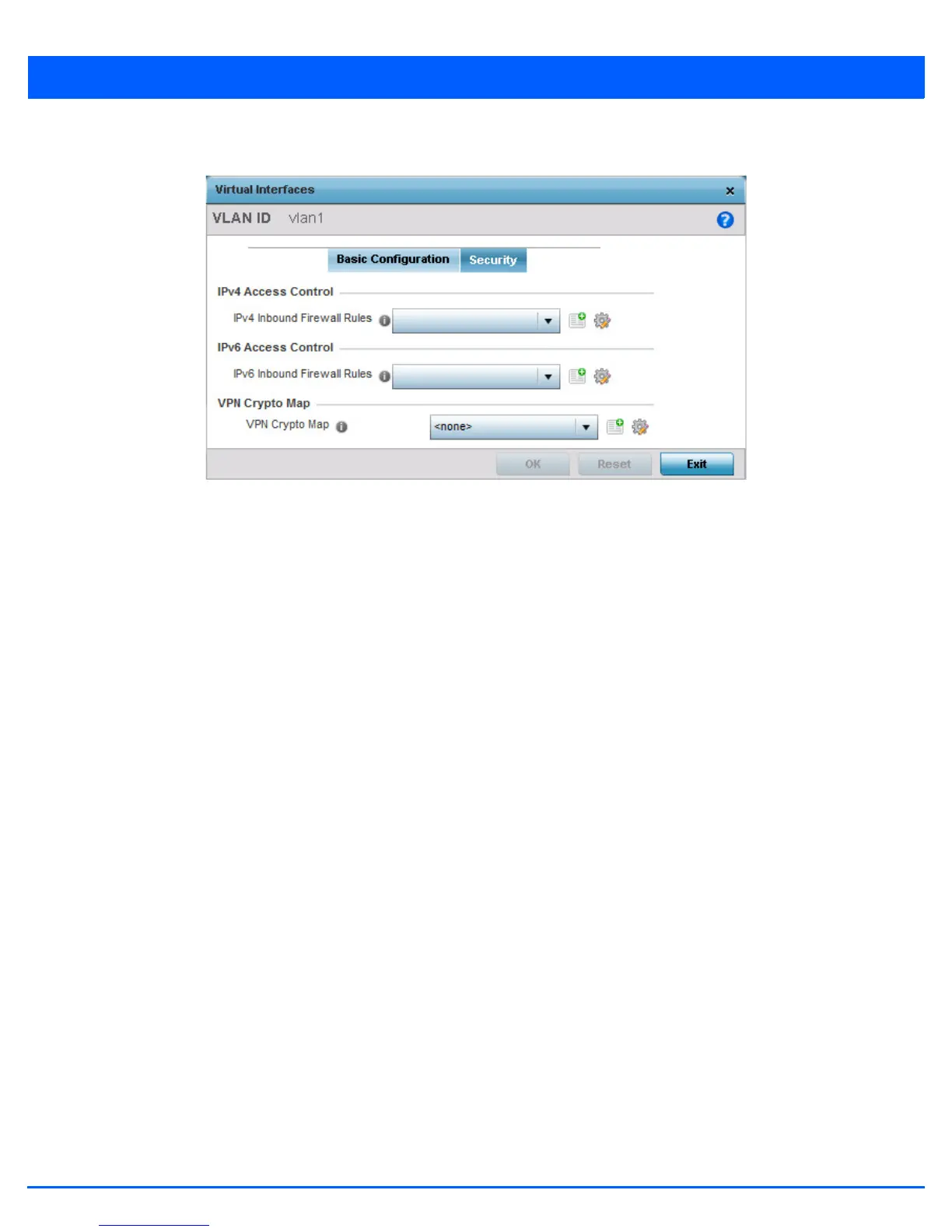5 - 104 WiNG 5.6 Access Point System Reference Guide
48. Select the Security tab.
Figure 5-66 Network - OSPF Virtual Interface - Security tab
49. Use the IPv4 Firewall Rules drop-down menu to select the IPv4 specific inbound firewall rules to apply to this profile’s
virtual interface configuration. Select the Create icon to define a new IPv4 firewall rule configuration or select the Edit
icon to modify an existing configuration.
IPv4 is a connection less protocol for packet switched networking. IPv4 operates as a best effort delivery method, since it
does not guarantee delivery, and does not ensure proper sequencing or duplicate delivery (unlike (TCP).
IPv4 and IPv6 are different enough to warrant separate protocols. IPv6 devices can alternatively use stateless address
autoconfiguration. IPv4 hosts can use link local addressing to provide local connectivity.
Use the IPv6 Firewall Rules drop-down menu to select the IPv6 specific inbound firewall rules to apply to this profile’s
virtual interface configuration. Select the Create icon to define a new IPv6 firewall rule configuration or select the Edit
icon to modify an existing configuration.
IPv6 is the latest revision of the Internet Protocol (IP) replacing IPv4. IPV6 provides enhanced identification and location
information for systems routing traffic across the Internet. IPv6 addresses are composed of eight groups of four
hexadecimal digits separated by colons.
50. Use the VPN Crypto Map drop-down menu to select and apply a VPN crypto map entry to apply to the OSPF dynamic route.
Crypto Map entries are sets of configuration parameters for encrypting packets passing through the VPN Tunnel. If a Crypto
Map configuration does not exist suiting the needs of this virtual interface, select the Create icon to define a new Crypto
Map configuration or the Edit icon to modify an existing configuration.
51. Select OK to save the changes to the OSPF route security configuration. Select Reset to revert to the last saved
configuration.

